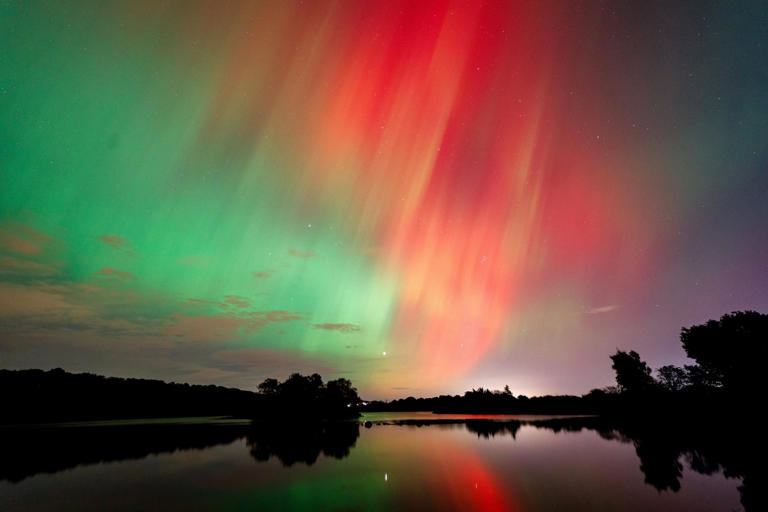Islamabad, Oct 14: This October, sightings of the Northern Aurora Lights, or aurora borealis, have been more frequent throughout the northern hemisphere, putting on an incredible show.
Many are wondering why these captivating light displays, which are often found close to the polar regions, are spreading to previously unobserved areas.
Let’s examine the causes of this month’s very high frequency of Northern Lights.
Increased Solar Activity
It is due to this that the Northern Aurora Lights are said to be associated with frequent occurrences in the month of October and this is so because of increased intensity of the sun.
Auroras are always associated with a stream of charged particles from the sun which bouncing of the Earth’s magnetic field.
The dancing lights also called the aurora borealis are created when these charged particles interact with gasses in the earth’s atmosphere.
At the moment the Sun has been more active than normal this month due to what is known as the solar cycle which takes place roughly every 11 years.
Increased solar wind is as a result of an increase in the number of sunspots and flares in the solar maximum period.
These solar winds give out wider and energetic auroral phenomenon as they come into contact with the Geomagnetic field of the earth.
This is why we have observed the Northern Lights becoming more conspicuous and seen this month at lower geographical latitudes compared to previous years.
Favorable Geomagnetic Conditions
Frequent views of the Northern Aurora Lights have been attributed to favorable geomagnetic circumstances in addition to enhanced solar activity.
This October has seen especially strong geomagnetic storms, which happen when the solar wind disrupts Earth’s magnetic field.
Even in regions beyond the usual auroral zones, such the northern United States, portions of Europe, and Canada, these storms produce ideal conditions for the auroras to be seen.
Strong geomagnetic storms cause the auroral oval, or visible aurora region, to widen, making it possible for individuals at further southern latitudes to see the lights.
October is a great month to see the aurora because of the severe geomagnetic storms and increasing solar activity.
Clear Skies and Longer Nights
Because October marks the beginning of fall, it’s also a great month to see the Northern Lights. The nights become longer as winter approaches, giving us more chances to witness the aurora.
Clearer skies, which reduce cloud cover and make it easier to see the lights, are frequently brought on by cooler temperatures.
This month has seen clear weather across a large portion of the globe, which has improved visibility of the Northern Aurora Lights. These ideal circumstances, along with longer, darker evenings, have made it possible to create breathtaking shows that are viewable to a wider audience.
Conclusion
This October, powerful geomagnetic storms, heightened solar activity, and suitable weather have all contributed to the regular displays of the Northern Aurora Lights.
For those who have been privileged to witness these phenomenons these have been quite a wonder. There will probably be even more opportunities to see the Northern Aurora Lights in the following months because the activity of the Sun increases.
For the best viewing experience, locate a dark area away from city lights and keep a watch on solar and geomagnetic forecasts if you’re expecting to see the Northern Aurora Lights.









